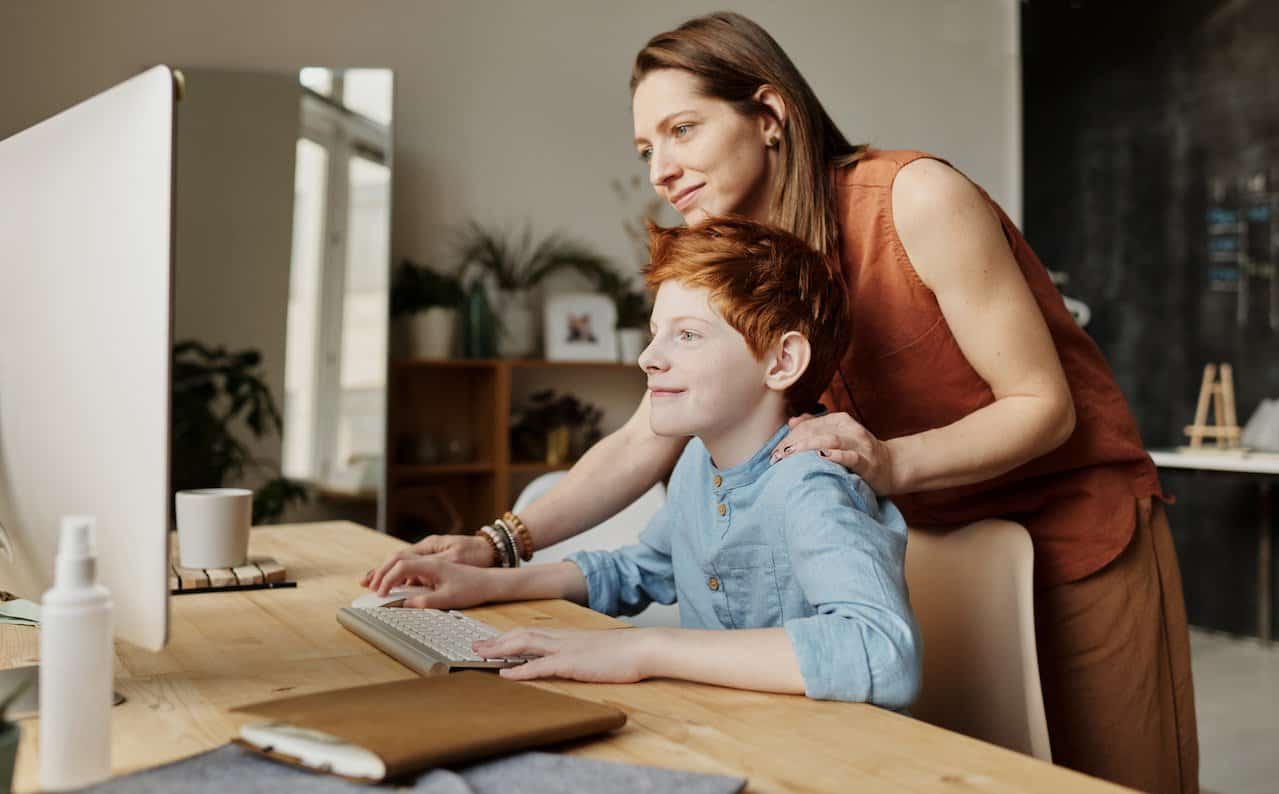Tips for Effective Parent-Teacher Communication
Parent-teacher communication is crucial for creating a supportive and collaborative environment that fosters student success. Effective communication between parents and teachers allows them to work together to identify and address academic and behavioral challenges, enhance students’ learning experiences, and promote a sense of community.
Effective parent-teacher communication also benefits students by promoting a positive attitude toward learning, increasing motivation and engagement, and improving academic outcomes. When parents and teachers collaborate to support students, they can help students develop the skills and knowledge they need to succeed academically and in life.
The purpose of this outline is to provide practical tips for effective parent-teacher communication. We will discuss strategies for establishing a positive relationship, overcoming communication barriers, and using effective communication techniques. By following these tips, parents and teachers can build a strong partnership that benefits students and promotes their academic and personal success.
A. Importance of building a relationship
Building a positive relationship between parents and teachers is crucial for the success of students. A strong relationship between parents and teachers can create an environment that fosters trust, mutual respect, and a shared commitment to supporting the student’s academic and personal growth.
B. Strategies for building a positive relationship
1. Introduction
Building a positive relationship requires effort and a willingness to communicate openly and respectfully. The following strategies can help build a strong partnership between parents and teachers.
2. Active listening
Active listening involves fully concentrating on what the other person is saying without interrupting, judging, or responding defensively. Teachers and parents can demonstrate active listening by paying attention to each other, maintaining eye contact, and asking clarifying questions.
3. Empathy
Empathy involves understanding and sharing the feelings and perspectives of another person. When parents and teachers show empathy towards each other, they can better understand each other’s concerns and work collaboratively to address them.
4. Open communication
Open communication involves being honest, respectful, and transparent in one’s communication. Parents and teachers should communicate regularly, using various methods such as in-person meetings, phone calls, emails, or newsletters. They should also be willing to share information about the student’s academic progress and any challenges that arise.
5. Follow-through
Following through on commitments is essential in building trust and credibility. Parents and teachers should make realistic commitments to each other and ensure that they are fulfilled. This includes responding promptly to messages, attending meetings, and implementing agreed-upon plans.
C. Benefits of a positive relationship
A positive relationship between parents and teachers can lead to many benefits, such as improved academic outcomes for students, increased motivation and engagement, and a stronger sense of community. It also fosters an environment of mutual respect, trust, and cooperation, which enhances the student’s overall learning experience.
Communication methods
Effective communication between parents and teachers is essential for supporting student success. In addition to building a positive relationship, choosing the right communication method can also facilitate effective communication. The following are some methods for effective communication between parents and teachers.
Methods for effective parent-teacher communication
1. In-person meetings
In-person meetings can be an effective way to communicate, especially for discussing complex issues or sensitive topics. It allows for face-to-face interaction, which can help build a stronger relationship and provide an opportunity to ask questions and provide detailed feedback.
2. Phone calls
Phone calls can be a convenient and efficient way to communicate, especially when discussing urgent matters or when it’s challenging to meet in person. It allows for real-time conversation, which can help address concerns promptly.
3. Email
Email is a popular method of communication that can be used for sharing information, updates, or reminders. It provides a written record of communication, making it easy to refer back to previous messages. However, it’s important to remember that tone and intent can be easily misinterpreted in written communication, so it’s essential to use clear and concise language.
4. Parent-teacher conferences
Parent-teacher conferences are scheduled meetings between parents and teachers to discuss the student’s academic progress, strengths, and areas for improvement. It’s an opportunity for parents and teachers to exchange feedback and discuss strategies to support the student’s academic and personal growth.
5. Newsletters
Newsletters can be used to share general information, updates, or upcoming events. It’s a convenient way to communicate with a large group of parents and can also provide useful resources or tips for supporting student learning.
Choosing the right method
Choosing the right method of communication depends on the situation, the urgency of the matter, and the preference of the parents and teachers involved. It’s important to consider the purpose of the communication, the audience, and the message’s tone and intent. By choosing the appropriate communication method, parents and teachers can ensure effective communication that supports student success.
Effective parent-teacher communication techniques
Effective communication techniques can help parents and teachers communicate more efficiently, reduce misunderstandings, and support student success. In this section, we will discuss some techniques for effective communication.
Techniques for effective communication
1. Being clear and concise
Clear and concise communication is essential to ensure that the message is understood correctly. It’s important to use simple and straightforward language, avoid using jargon, and provide clear instructions or information.
2. Being specific
Being specific in communication helps to avoid misunderstandings and ensure that the message is understood correctly. It’s important to provide specific examples or details when giving feedback or sharing information.
3. Using “I” statements
Using “I” statements instead of “you” statements can help to avoid making the other person feel defensive or attacked. “I” statements focus on how the speaker feels about the situation and can help to communicate more effectively.
4. Being respectful
Respectful communication involves being polite, courteous, and considerate in one’s communication. It’s important to listen actively, avoid interrupting, and acknowledge the other person’s perspective.
5. Providing constructive feedback
Constructive feedback involves providing feedback that is specific, non-judgmental, and focused on the behavior rather than the person. It’s important to provide feedback that is actionable and focused on areas for improvement.
Benefits of effective communication techniques
Effective communication techniques can improve the quality of communication between parents and teachers, reduce misunderstandings, and build stronger relationships. It can also help to promote a positive school culture that values open communication and constructive feedback. When parents and teachers communicate effectively, they can work together to support student success and improve academic outcomes. Effective communication techniques can also promote a sense of partnership and collaboration that can benefit both parents and teachers.
Overcoming communication barriers
Effective communication is essential for establishing a strong partnership between parents and teachers. However, communication barriers can hinder the effectiveness of communication, leading to misunderstandings and conflicts. It is, therefore, crucial to recognize these barriers and develop strategies to overcome them.
Common communication barriers
1. Language barriers
Language barriers occur when parents and teachers speak different languages. This can make it challenging to communicate effectively, leading to misunderstandings and miscommunication.
2. Cultural differences
Cultural differences can affect communication by influencing the way people interpret and respond to information. Different cultural backgrounds can lead to different communication styles, making it difficult to understand each other.
3. Time constraints
Busy schedules can make it difficult to find time to communicate effectively. Teachers may have a limited amount of time to communicate with parents, while parents may have work or other commitments that limit their availability.
4. Emotional barriers
Emotional barriers can affect communication by influencing how people interpret and respond to information. For example, parents may become defensive if they feel their child is being criticized, while teachers may feel frustrated if they perceive parents as being unresponsive or uncooperative.
Strategies for overcoming communication barriers
- Language barriers – Providing translation services or using technology to translate messages can help overcome language barriers. Teachers can also simplify their language and avoid using jargon to make communication easier to understand.
- Cultural differences – Teachers can seek to understand the cultural backgrounds of their students and their families to communicate more effectively. They can also avoid making assumptions and be open to learning from parents.
- Time constraints – Scheduling regular meetings or using technology to communicate can help overcome time constraints. Teachers can also be flexible and offer alternative meeting times to accommodate busy schedules.
- Emotional barriers – Teachers can use positive language and focus on the student’s strengths to avoid triggering defensive reactions from parents. Parents can be encouraged to share their concerns and feedback in a constructive and respectful manner.
By recognizing and addressing communication barriers, parents and teachers can work together to create a supportive and collaborative environment that fosters student success.
Final thoughts
Effective communication between parents and teachers is essential for student success. Establishing a positive relationship, overcoming communication barriers, and using strategies such as active listening, empathy, open communication, and follow-through can help build a strong partnership that benefits students.
Effective communication between parents and teachers can lead to improved academic outcomes, increased motivation and engagement, and a stronger sense of community. It also fosters an environment of mutual respect, trust, and cooperation, which enhances the student’s overall learning experience.
Parents and teachers play a vital role in supporting student success. By communicating effectively and working together, they can help students reach their full potential. Additionally, one-on-one tutoring can provide personalized support for students struggling with specific academic challenges. Parents and teachers should consider exploring tutoring options and discussing them together to support student’s academic success.
In conclusion, effective communication between parents and teachers is crucial for student success. By establishing a positive relationship, overcoming communication barriers, and using effective strategies, parents and teachers can build a strong partnership that benefits students. It is essential to recognize the importance of effective communication and take action to support student success.

